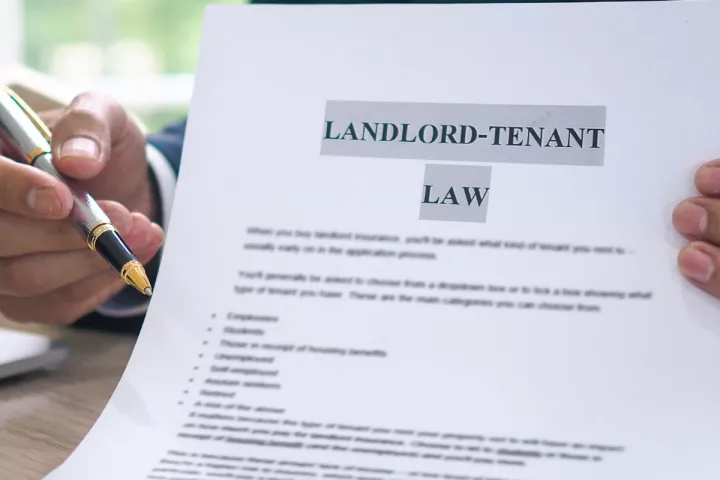A Deed of Assignment Housing Association context is a legal document transferring rights or interests in a property from one party to another. It’s commonly used when a tenant wants to transfer their tenancy to someone else.
This document outlines the terms of the transfer and must comply with legal requirements. For example, it should include details about the property, parties involved, and any conditions or restrictions.
Both landlords and tenants must understand the implications of a Deed of Assignment, as it can affect their rights and responsibilities regarding the property.
In the upcoming article, we’ll explore Deeds of Assignment in Housing Association agreements in detail.
How it applies to Housing Association agreements

In Housing Association agreements, a Deed of Assignment is typically utilized when a tenant wishes to transfer their tenancy to a new occupant.
This document establishes the legal framework for the transfer, outlining
the terms and conditions under which the assignment occurs.
It ensures that the transfer is conducted in accordance with relevant laws and regulations governing Housing Association tenancies, assuring both tenants and landlords.
MajorTerms and Concepts
- Assignor: The party transferring their rights.
- Assignee: The party receiving the rights.
- Deed of Assignment: The legal document formalizing the transfer.
- Secure Tenancy: A type of tenancy with specific rights and protections.
- Assured Tenancy: Another type of tenancy with different rules.
- Joint Tenancy: When multiple tenants share equal rights.
- Sole Tenancy: When only one tenant holds the tenancy.
What are the Benefits of Deed of Assignment Housing Association?

The benefits of a Deed of Assignment are twofold. Let’s explore the benefits of the Deed of Assignment in the context of housing association agreements.
Assignor (Outgoing Tenant)
The assignor gains flexibility by transferring their tenancy rights. They can move out or change their living situation without being tied to the property.
By assigning the tenancy, the assignor is relieved of ongoing responsibilities related to the property, such as rent payments and maintenance obligations.
If the assignor faces financial difficulties, they can pass on the tenancy to someone else, reducing their financial burden.
Assignee (Incoming Tenant)
The assignee gains immediate access to the property without waiting for a new tenancy agreement.
In social housing, where waiting lists can be long, assignment provides a quicker route to secure housing.
The assignee steps into the same tenancy rights and protections as the original tenant, ensuring continuity.
Importance of Clarity and Protection in Property Transactions
Clarity and protection are paramount in property transactions, and the Deed of Assignment plays a vital role in ensuring both aspects are addressed. The Deed of Assignment makes it clear who has what rights and responsibilities when property changes hands. This helps prevent arguments or confusion later on.
Additionally, the document outlines specific terms and conditions governing the assignment, such as rent payment responsibilities, property maintenance obligations, and any restrictions on subletting or occupancy.
This clear understanding sets expectations and duties for everyone involved, making things transparent and lowering the chance of legal problems or disagreements.
A few Examples of the benefits of using a Deed of Assignment include
- Mutual Exchange: Two tenants want to swap homes within the same housing association. By assigning their tenancies, they can move to their desired locations without waiting for new allocations.
- Divorce or Separation: A couple with a joint tenancy decides to separate. Through assignment, one partner can become the sole tenant, allowing them to continue living in the property.
- Inheritance Planning: An elderly tenant wants to ensure their family inherits the tenancy. By assigning the tenancy to a family member, they secure the property’s continuity.
What are the legal requirements for a valid Deed of Assignment Housing Association?

In the UK, a valid Deed of Assignment must meet certain legal requirements to be enforceable.
Firstly, the document must be in writing, providing a clear record of the transfer of property rights or interests. It should clearly identify the parties involved, including the assignor (the party transferring the rights) and the assignee (the party receiving the rights).
Additionally, the Deed of Assignment must accurately specify the property or rights being transferred, leaving no room for ambiguity or misunderstanding.
Furthermore, the document must be signed by all parties involved in the assignment, indicating their agreement to the terms outlined therein.
It’s also essential that the signatures are witnessed by independent individuals who can attest to the authenticity of the signatures. This witnessing helps to prevent disputes regarding the validity of the signatures at a later stage.
Moreover, depending on the nature of the assignment and the specific legal requirements, the Deed of Assignment may need to be executed as a deed. This involves additional formalities, such as the use of specific wording and the affixation of seals or stamps.
While not all assignments need to be this formal, meeting these requirements ensures the document’s legality and enforceability.
Can we change a Deed of Assignment once it’s signed?
No, once a Deed of Assignment is signed by all parties involved, it generally cannot be changed unilaterally. Any amendments to the document would typically require the consent of all parties and may need to be documented in a separate agreement or addendum.
However, if all parties agree to the changes, it’s possible to modify the Deed of Assignment to reflect updated terms or conditions. It’s important to ensure that any changes are properly documented and executed in accordance with legal requirements to maintain the validity and enforceability of the document.
Are there taxes linked to the Deed of Assignment Housing Association?

Yes, there may be taxes linked to Deeds of Assignment for Housing Association properties. Let’s have a look
Income Tax Implications
When assigning a property, such as transferring rental income to a spouse (as in your example), consider the following
- Mortgage Relief: If you continue to benefit from 20% of the rental income, you can still seek relief on mortgage interest. However, this relief applies only to the person who incurs the mortgage costs and pays the interest.
- Capital Gains Tax: There is no capital gain when a property is transferred between spouses. This transfer is considered a “no gain/no loss” situation.
Form 17 and Valid Deed of Assignment
If the property is solely owned by you (the husband), a Form 17 is not necessary. Form 17 is relevant when the property is jointly owned.
Instead, submit a valid Deed of Assignment or Trust document to reflect the reassigned beneficial interest in the property.
Stamp Duty Land Tax (SDLT)
For specific advice related to SDLT, I recommend contacting the relevant authorities directly by calling 0300 200 3510
FAQ
What is an assured tenancy UK?
An assured tenancy in the UK means you can rent a home for a long time, and you have special rights to stay there. This type of rental gives you more protection and means your landlord can’t easily kick you out.
What is the difference between assured and non-assured tenancy?
The big difference is that with an assured tenancy, you have more rights and it’s harder for your landlord to make you leave. Non-assured tenancies have fewer rules to protect you, so your landlord might be able to raise the rent or ask you to move out more easily.
Can you end an assured tenancy?
Yes, you can end an assured tenancy, but you have to follow certain rules. Your landlord can’t just kick you out without giving you notice, and you have a right to leave too, but you have to tell your landlord first.
What happens when a tenancy agreement expires UK?
When your tenancy agreement ends in the UK, you might need to find a new place to live or talk to your landlord about staying longer. If you stay without signing a new agreement, your old rules might still apply, but it’s best to talk to your landlord.
What is the minimum tenancy term in the UK?
There’s no set minimum time for how long you can rent in the UK, but most rental agreements are for at least 6 months. Some might be longer, but it depends on what you and your landlord agree on.
Can I live in the UK without a tenancy agreement?
Yes, you can live in the UK without a formal agreement, but it’s not a great idea. Without an agreement, you might not have as many rights, and things could get confusing if there are any problems with your landlord.
Can a tenancy agreement be handwritten UK?
Yes, a tenancy agreement can be written by hand in the UK. Even though most are typed out or made by professionals, a handwritten one can still be legal as long as it clearly says what you and your landlord agreed to.
Final thoughts
The Deed of Assignment plays a vital role in Housing Association agreements, helping transfer tenancy rights and providing clarity and protection for tenants and landlords alike.
By following legal requirements and understanding the rights and duties outlined in the Deed, individuals can smoothly navigate property transactions. Seeking legal advice if necessary ensures that all parties involved are well-informed and protected during the assignment process.



